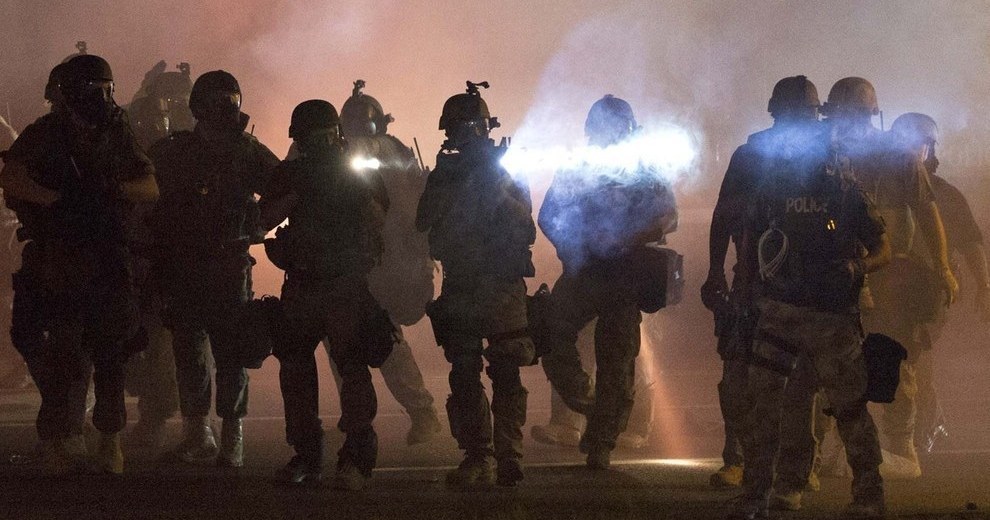FERGUSON RESEMBLES WAR ZONE AS RACISM TAKES A TOLL
Heavily armed police clash with protesters in US "War Zone" Ferguson, Missouri

NEW DELHI: Violence has escalated in the St. Louis suburb of Ferguson, Missouri, where protesters who had taken to the street in response to the killing of unarmed Michael Brown by local police, clashed with authorities.
Over the weekend protesters threw firebombs, as some elements engaged in vandalism of businesses, with the police using tear gas and rubber bullets to contain the crowd. A curfew was imposed the lasted till 5 AM on Monday, with it being lifted only as Missouri National Guard troops, called by Governor Jay Nixon, entered the city.
Images emerging from Ferguson resemble a war zone, depicting heavily armed riot police and scores of protesters. The local police has come under attack for the shooting of theunarmed teenager, and the brutality with which it has curbed largely peaceful protests, thereafter.
Eighteen year old Brown was reportedly walking, unarmed, from a convenience store to his grandmother’s apartment in Ferguson, when a police officer shot and killed him. Eyewitness accounts suggest that Brown was cooperative, raising his arms when the officer shot at him multiple times. The police version notes a struggle, saying that Brown attempted to get hold of the officer’s gun. An autopsy of Brown, released on Monday, notes that the young man was shot six times, including twice in the head.
The name of the officer was released recently, identifying Darren Wilson, who is white, thereby locating the crisis in Ferguson within the ambits of racial discrimination, police brutality and civil rights.
A thousands of people took the streets to ask for justice, personal accounts of people feeling targeted by the police on the basis of their race began emerging. The incident, seems to be a trigger, representing years of frustration and marginalisation. Ferguson is a city of 21,000 people - 67 percent of whom are black. However, 94 percent of the police force, and most prominent figures in local government, including the mayor, are white.
The situation prompted a statement from US President Barack Obama, who on Monday, whilst acknowledging deep racial divisions in American society, appealed for calm. “In too many communities around the country, a gulf of mistrust exists between local residents and law enforcement… In too many communities, too many young men of color are left behind and seen only as objects of fear,” Obama said, adding that whilst progress has been made, “we have not made enough progress.”
Whilst stating that there was “no excuse for excessive force by police or any action that denies people the right to protest peacefully,” Obama said, “I understand the passions and the anger that arise over the death of Michael Brown, [however] giving in to that anger by looting or carrying guns and even attacking the police only serves to raise tensions and stir chaos.”
At the time of writing, the situation remained tense in Ferguson, with protests continuing. The shooting of Michael Brown is being compared to the shooting of 17-year old unarmed Trayvon Martin, who was killed by a neighbourhood watch captain. The shooter was eventually acquitted of murder in a racially charged case.
Other parallels have been drawn as well. The killing of 17-year old Jordan Davis, who was, along with his friends, shot at by a man for playing “loud music.” The jury convicted the shooter on four counts, but not on the count of murder, with many attributing the verdict to a racial context -- the shooter being white and the teenagers, including Davis who died, being black.
The most apparent parallel however, are the Los Angeles riots of 1992 -- where the trigger was the brutal police beating of Rodney King, which was videotaped and widely covered but ended in the acquittal of the officers concerned. The Ferguson protests, much like the LA riots of 1992, may have been a reaction to an immediate trigger, but are located in a far broader context of marginalisation and discrimination.



